Oxbow Books is a leading publisher in the fields of archaeology, ancient history and medieval studies, with an international reputation for quality and affordability. Oxbow's archaeology publishing covers all periods from earliest prehistory through classical archaeology, the ancient Near East, Egyptology, the Middle Ages and post-medieval archaeology. They publish a wide variety of books including scholarly monographs, edited collections of papers, and excavation and research reports in related fields such as archaeological practice and theory, archaeozoology, and environmental, landscape and maritime archaeology.
Founded in Oxford in 1983 by academic and museum archaeologist, David Brown, Oxbow Books has evolved and expanded significantly over the years. Now celebrating their 40th anniversary, Oxbow remains dedicated to the quality of their publishing for readers, and the contribution their books bring to the scholarly and professional communities more broadly.
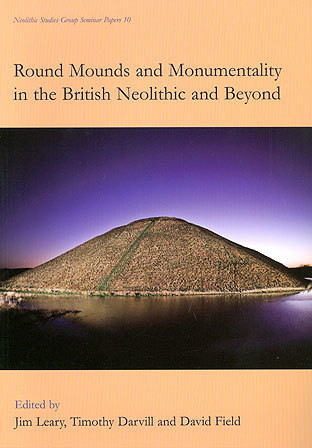
Format: Paperback
Pages: 256
ISBN: 9781842174043
Pub Date: 10 Jul 2010
Series: Neolithic Studies Group Seminar Papers
Illustrations: 101 b/w illus, 13 colour illus, 5 tables
Description:
This volume, the tenth published collection of seminar papers from the Neolithic Studies Group, is based upon a conference that took place at the British Museum in November 2008. The meeting aimed to consider the chronology and development of Neolithic round mounds; their changing form and use; their relationships to contemporary cultural, ancestral and natural landscapes; the extent to which they provide scope for identifying local and regional social organization; and, not least, why they were round. Following the conference, further papers were offered for this edited volume, widening and broadening the initial discussion.
The papers are arranged in rough geographic order starting in the north and working southwards before heading across the Irish Sea and then the Atlantic. Following a wide-ranging discussion of round mounds across the world, two papers discuss aspects of Scottish round mounds, before moving down to the Isle of Man, the Neolithic round mounds of the Yorkshire Wolds, Liffs Low in the Derbyshire Peak District, and round mounds on the Cotswolds. The volume then moves to Wessex, starting with a discussion of Silbury Hill, and followed by a re-evaluation of the Great Barrow at Knowlton, Conquer Barrow at Mount Pleasant, and the Hatfield Barrow at Marden. How archaeologists and heritage managers choose to interpret round mounds is the subject of the next paper, using Silbury Hill as the primary case study. This is followed by a broad discussion of circular traditions, particularly formative henges, in Wales and adjacent counties, round burial mounds in the Boyne Valley, Ireland, such as Knowth, Dowth and Newgrange, and Irish round mounds containing portal tombs. By way of comparison with the evidence from the British Isles, the volume then crosses over to North America for a broad discussion of mound-building traditions there. Rounding off the volume is another wide-ranging essay on the nature of round mounds, which challenges our very understanding and interpretation of them.
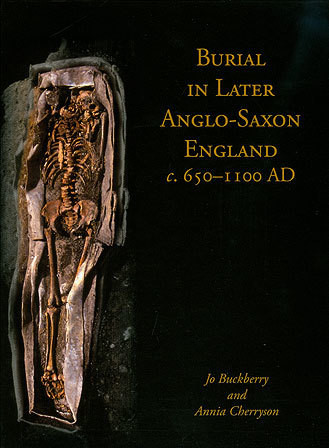

Pages: 156
ISBN: 9781842179659
Pub Date: 07 Jul 2010
Illustrations: b/w illus
Pages: 156
ISBN: 9781785705496
Pub Date: 15 Dec 2016
Description:
Traditionally the study of early medieval burial practices in England has focused on the furnished burials of the early Anglo-Saxon period with those of the later centuries perceived as uniform and therefore uninteresting. The last decade has seen the publication of many important cemeteries and synthetic works demonstrating that such a simplistic view of later Anglo-Saxon burial is no longer tenable. The reality is rather more complex, with social and political perspectives influencing both the location and mode of burial in this period.
This edited volume is the first that brings together papers by leading researchers in the field and illustrates the diversity of approaches being used to study the burials of this period. The overarching theme of the book is differential treatment in death, which is examined at the site-specific, settlement, regional and national level. More specifically, the symbolism of conversion-period grave good deposition, the impact of the church, and aspects of identity, burial diversity and biocultural approaches to cemetery analysis are discussed.

Format: Hardback
Pages: 176
ISBN: 9781842174029
Pub Date: 30 Jun 2010
Illustrations: 89 b/w illus
Description:
This volume grew out of an interdisciplinary discussion held in the context of the Leverhulme-funded project 'Changing Beliefs in the Human Body', through which the image of the body in pieces soon emerged as a potent site of attitudes about the body and associated practices in many periods. Archaeologists routinely encounter parts of human and animal bodies in their excavations. Such fragmentary evidence has often been created through accidental damage and the passage of time - nevertheless, it can also signify a deliberate and meaningful act of fragmentation.
As a fragment, a part may acquire a distinct meaning through its enchained relationship to the whole or alternatively it may be used in a more straightforward manner to represent the whole or even act as stand-in for other variables. This collection of papers puts bodily fragmentation into a long-term historical perspective. The temporal spread of the papers collected here indicates both the consistent importance and the varied perception of body parts in the archaeological record of Europe and the Near East. By bringing case studies together from a range of locations and time periods, each chapter brings a different insight to the role of body parts and body wholes and explores the status of the body in different cultural contexts. Many of the papers deal directly with the physical remains of the dead body, but the range of practices and representations covered in this volume confirm the sheer variability of treatments of the body throughout human history. Every one of the contributions shows how looking at how the human body is divided into pieces or parts can give us deeper insights into the beliefs of the particular society which produced these practices and representations.

Format: Paperback
Pages: 272
ISBN: 9781842174050
Pub Date: 30 Jun 2010
Illustrations: 159 b/w & colour illus, 2 tables
Description:
This volume derives from a workshop held at the University of Kalmar (now Linnaeus University), Sweden between the 20-24 of October 2008. The aim of this gathering was to provide a forum for rock art researchers from different parts of northern Europe to discuss traditional as well as current interpretative trends within rock art research. Changing Pictures aims to return to traditional interpretative notions regarding the meaning and significance of rock art to investigate if and why any information had been left behind to recover and rethink.
During the last decades, there has been an immense global interest among archaeologists and anthropologists in studying rock art. Research in northern Europe, as elsewhere, has intensely explored a manifold of methodological and theoretical perspectives. Most of these studies however, have been published in languages that seldom reach beyond the native speakers of Norwegian, Danish, and Swedish, Russian or Finnish. Therefore an important motivation for this volume is to try to apprise some of the current movements within this field of research and present it for an international audience. These papers explore the relevance of older ideas, such as notions about prehistoric religion, ritual performance, sympathetic magic, animism and totemism, the mindscapes of landscapes etc., as well as the present "state of the art" in order to develop a broader understanding of the phenomenon we call rock art. This aspiration can be seen as a common thread linking the different chapters in this book. Saying that, some, if not all, of the articles presented in this volume challenge the notion "rock art" itself, arguing that sometimes the rock, the "canvas" and rather intangible but equally important sensual encounters, such as sound, echoes, touch and temporal phenomenological changes and the perception of decorated rock art panels, should be regarded, at least, as important as the "art" itself. By reassessing traditional approaches to Scandinavian rock art and creatively reworking these ideas, whilst also addressing significant new concepts such as the agency of rock and the performativity of rock art, this anthology of papers offers not only a snapshot of current debates, but also reflects pivotal changes in the study of rock art.
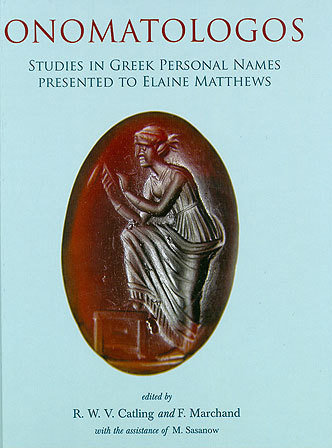
Format: Hardback
Pages: 680
ISBN: 9781842179826
Pub Date: 30 Jun 2010
Description:
onomatologos is a term used in later antiquity to describe eminent lexicographers such as Hesychius and Pollux as 'collectors of words', but here it is used as the title for a major volume of papers prepared in honour of Elaine Matthews, recently retired long-serving editor of the Lexicon of Greek Personal Names ( LGPN ): a 'collector of names'. The LGPN , conceived by Peter Fraser, has had as its primary aim the documentation on a geographical basis of the personal names attested between the earliest use of the Greek alphabet (c. 750 BC) and the early seventh century AD throughout the Hellenic and hellenized world, wherever the Greek language and script was used.
The 55 contributions to this volume reflect well the breadth of LGPN itself, extending to all points of the compass far beyond the Greek heartlands bordering the Aegean sea, as well as the wide range of disciplines to which the study of personal names can be applied. Besides their honorific purpose, it is intended that the contributions will further advance this field of study, revealing some of the potential that has been unlocked by the systematic documentation of the evidence, mainly from inscriptions and papyri, that has accumulated over the last century. The papers presented here amply demonstrate the value of this raw material for linguists and philologists, students of Greek and Latin literature, epigraphists, papyrologists, numismatists and prosopographers, as well as social historians with broader interests in the geographical and chronological distribution of personal names.

Format: Hardback
Pages: 192
ISBN: 9781842174036
Pub Date: 30 Jun 2010
Illustrations: 86 b/w illus, 8 tables
Description:
The Upper Pleistocene era encompassed a period of dramatic cultural developments in the south-eastern Mediterranean basin. This book highlights and synthesizes the latest research and current scientific debate on the archaeology of this time period in North Africa and the Near East. Recent archaeological research in North Africa has meant this region now plays a decisive role in scientific debate.
After decades of neglect, the archaeological record from North Africa has now been seen to parallel in significance that of the Near East. This book offers an opportunity to observe the Afro-Asian side of the Mediterranean basin as an uninterrupted land, as it was for its Upper Pleistocene inhabitants. Areas of focus include the Out-of-Africa movement of anatomically modern humans (Homo sapiens) into the Levant and the transition from the Middle Palaeolithic/Middle Stone Age to the Upper Palaeolithic/Later Stone Age, during which a change of lifestyle took place, based on plant cultivation and animal husbandry. These topics are of crucial interest to anyone studying human evolution, prehistoric archaeology, anthropology, and palaeo-environmental studies. This volume brings together data as well as perspectives from various scholars, often separated by their areas of interest and location. This volume is complementary to The Mediterranean from 50,000 to 25,000 BP: Turning Points and New Directions edited by M. Camps and C. Szmidt (Oxbow Books, 2009).
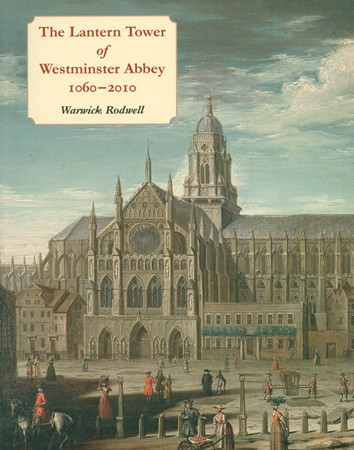
Format: Paperback
Pages: 112
ISBN: 9781842179796
Pub Date: 20 May 2010
Illustrations: full colour illus throughout
Description:
Westminster Abbey is one of the most important and well-known medieval buildings in Europe but, despite being studied by generations of scholars, there is still much to learn about its history and architecture. The lantern over the centre of the church is a case in point. Edward the Confessor built a great tower here, which is depicted on the Bayeux Tapestry.
When Henry III was rebuilding the Abbey in the 1250s, a new tower was begun which was to have dominated the Westminster skyline, but it was never finished and 150 years later an octagonal lantern like that at Ely Cathedral was built on the roof. It in turn was demolished in the sixteenth century, and in 1710 Sir Christopher Wren designed a 400-foot tower and spire, but did not live to see it built. His successor, Nicholas Hawksmoor, then produced a range of options for completing the lantern tower: a design was chosen and construction began in 1724. However, King George I died in 1727 and the Abbey had to be cleared of scaffolding for the coronation of his son. Although only the first stage of the new tower and spire had been built, construction never resumed and the inelegant stump was capped with a temporary roof. Subsequently, the lantern was burnt out in 1803 and again in 1941, but its shell remains today basically as Hawksmoor left it. In this study, Professor Warwick Rodwell assembles for the first time all the historical and architectural evidence, to tell the remarkable story of Westminster Abbey's unfinished lantern tower over the last 950 years.

Format: Paperback
Pages: 488
ISBN: 9781842173527
Pub Date: 13 May 2010
Illustrations: b/w illus
Description:
Archaeology is not just about the past, but the present and future too. Much of our present condition and future prospects are inevitably bound up with what states do and what they fail to do. To understand the inner-workings and motivations of states one must understand how and why they came into existence in the first place.
This book describes how states formed in Egypt and Mesopotamia, China and the Andes, and also how the Indus Civilization functioned without a state. This work spans law, ideology, politics, economics, and psychology, the ancient world and modern history, in order to show how power is obtained, sustained and deployed, and in whose interests. Grounded in archaeological data, it examines human nature, morality, violence and governance, issues of special importance to everyone, but in particular to students of politics, anthropology, psychology and sociology, as well as archaeology.
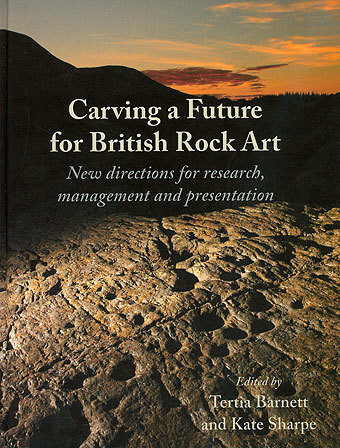
Format: Hardback
Pages: 240
ISBN: 9781842173640
Pub Date: 04 May 2010
Illustrations: 111 b/w & colour illus, 15 tables
Description:
Over the last few years, the ways in which we perceive and document rock art have shifted irreversibly. Prehistoric rock art played little part in the development of British and Irish archaeology and was not recognised until the 19th century, when its equivalents in Scandinavia and the Iberian Peninsula were already well known. Previously considered a fringe activity and the work of amateur archaeologists, over the last 30 years the situation has improved considerably, and the appearance of books such as this signify the change.
This volume makes a powerful case for an archaeology that integrates rock art into a wider vision of the past. It brings together the experiences and informed opinions of the key organisations and stakeholders responsible for the conservation, management and accessibility of British rock art. An on-going and exciting period of change is documented here and the main issues that underpin the survival of our prehistoric carved heritage are addressed. Grouped into three sections, the chapters cover the recording, management and presentation of British rock art. The contributions illustrate the wide range of perceptions and approaches to the study, and the diversity of individuals and institutions who have become drawn into this fascinating subject, with independent researchers, heritage managers, artists and academics each bringing a unique perspective. This book aims to both inform new directions in rock art management strategies and provoke further initiatives through which these strategies can be implemented.

Format: Hardback
Pages: 256
ISBN: 9781842174074
Pub Date: 30 Apr 2010
Series: BANEA monograph Series
Illustrations: 79 b/w illus, 19 tables
Description:
This book explores the dynamics of small-scale societies in the ancient Near East by examining the ways in which particular communities functioned and interacted and by moving beyond the broad neo-evolutionary models of social change which have characterised many earlier approaches. By focusing on issues of diversity, scale, and context, it considers the ways in which economy, crafts, technology, and ritual were organised; the roles played by mortuary practices and households in the structure and development of ancient societies; and the importance of agency, identity, ethnicity, gender, community and cultural interaction for the rise of socio-economic complexity. The contributors to this volume are well-known archaeologists in the field of Near Eastern studies; all are currently engaged in fieldwork or research in Cyprus, the Levant, or Turkey.
The variety and depth of the research they present here reflect the richness of the archaeological record in the 'cradle of civilisation' and convey the vibrancy of current interpretive approaches within the field of Near Eastern prehistory today.
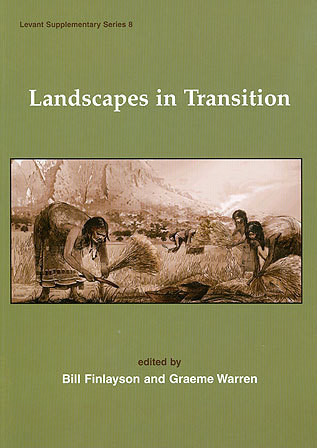
Format: Paperback
Pages: 248
ISBN: 9781842174166
Pub Date: 20 Apr 2010
Series: Levant Supplementary Series
Description:
This volume presents a collection of papers focusing on archaeological approaches to landscape in the context of the adoption of agriculture in Southwest Asia and Northwest Europe. Case studies are presented from these contrasting regions, one where the transition to farming is indigenous, and the other where the transformation is initiated externally. This allows us to consider to what extent hunter-gatherer and farmer landscapes may be different, or the degree to which apparent differences have been constructed by our expectations and traditions of interpretation.
While the concept 'landscape' enjoys considerable popularity in archaeological interpretation, it is somewhat ill-defined and inconsistently used. Some have suggested that this fluidity allows landscape to be a 'usefully ambiguous concept' but at times there is a danger that this very ambiguity affords imprecision in our narratives. This is particularly important where differing traditions of archaeological interpretation meet, as, for example, in the transition from hunting and gathering to farming. The transition has been understood as a major division in archaeological practice and attitudes to 'landscape' across the transition reflect this dichotomy. The results of these debates are illuminating, and raise questions beyond the immediate geographical scope of the volume. The contrast between the two regions provides valuable comparisons between traditions of archaeological theory and interpretation and the bodies of evidence. Bill Finlayson is the Director of the Council for British Research in the Levant, Graeme Warren is a College Lecturer in the School of Archaeology, UCD, Ireland.

Format: Hardback
Pages: 160
ISBN: 9780977409488
Pub Date: 06 Apr 2010
Illustrations: 8 col pls, 41 b/w illus, 1 map
Description:
This book critically examines the existence and identification of purpose-built slave markets in the Graeco-Roman world from a cross-cultural perspective. It investigates whether certain ancient monuments were designed specifically for use as slave markets and whether they required special equipment and safety precautions, allowing them to be clearly distinguished from other nonspecific commercial buildings and marketplaces of the Graeco-Roman world. First, selected parallels, namely slave markets in Istanbul, Marrakesh, Cairo, Havana, Charleston, and New Orleans, are analyzed in order to: assess the possible range of locations for the sale of slaves in slave-holding cultures better known than their ancient equivalents; answer the question of whether any of these cultures constructed clearly identifiable purpose-built slave markets on a regular basis, that is, whether the slave market was ever a firmly established building type; evaluate what can be gained from such a cross-cultural approach to the study of ancient slave markets.
This is followed by a brief discussion of ancient written sources on slave markets, focusing on what the texts reveal about the existence, design, and requirements of ancient slave markets. A major part of this book is dedicated to a critical reexamination of all eight ancient buildings that have been identified as slave markets so far: Delos, so-called Agora of the Italians; Pompeii, Building of Eumachia; Rome, Crypta Balbi; Ostia, Tempio Rotondo; Herculaneum, so-called Basilica; Leptis Magna, so-called Chalcidicum/Building of Iddibal Cadapha Aemilius; Ephesus, so-called Sarapeum; Magnesia-on-Maeander, so-called Prytaneion. The conclusion includes a short comparison of modern and alleged ancient slave markets and finally answers the question of whether, to date, ancient slave markets are an archaeological fact or fiction.
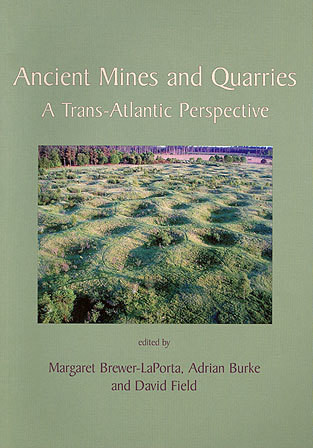
Format: Paperback
Pages: 224
ISBN: 9781842174012
Pub Date: 04 Apr 2010
Illustrations: 99 b/w illus, 10 tables
Description:
Fourteen papers explore a range of issues relating to prehistoric extraction sites, including ethnography, geochemical signatures, the application of neutron activation analysis, exploitation of erratics, excavation, survey and conservation. Topics include quernstone extraction, use of hammers, stages of extraction, geographical and social contexts, changing social regimes, the ritualised nature of journeys to quarry sites, study of petrofabrics, and the effects of joint and cleavage on quarrying practice. Two contributions are in French with extended summaries in English.

Format: Hardback
Pages: 352
ISBN: 9781842173831
Pub Date: 31 Mar 2010
Series: American School of Prehistoric Research Monograph
Description:
Alexander Marshack single-handedly revolutionized the field of Paleolithic art research. His astounding photographs of portable art objects caused us to see them with fresh eyes, to ask new questions, and to understand their technology and production far more precisely; and his pioneering use of infrared and ultraviolet light in the caves revealed startling new facts about the paintings. In addition, he carried out important, provocative and challenging work on archaeoastronomy, calendar sticks, female imagery, and other topics.
Alexander Marshack was able to do what nobody else ever had before, or perhaps ever will again - i.e. travel all over Europe, visiting not only many decorated caves but also all the portable art objects scattered throughout the continent, including Russia. This unique experience and knowledge, together with his unrivalled and amazing documentation of all this material, made him by far the USA's foremost specialist in Paleolithic imagery. To honor his memory, in this book, scholars from many parts of the world contribute papers about some of the many problems that interested him and to which he made such a massive contribution.
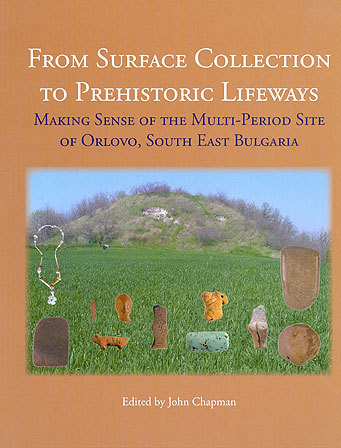
Format: Hardback
Pages: 208
ISBN: 9781842173916
Pub Date: 31 Mar 2010
Illustrations: 8 page colour section, 80 b/w illus, 34 tables
Description:
The communities who lived in the Balkans between 7000 and 4000 Cal. BC have now been the focus of intensive and increasingly inter-disciplinary research for the last forty years. Dwelling between the warm, dry Mediterranean zones of the Aegean and Anatolia and the cooler and snowier Central European heartlands, these communities created distinctive social formations that left enduring marks on today's landscapes.
One of the key trends in these millennia concerned the high value attributed to the exotic, especially if that was represented by objects of striking colour and brilliance. Thus, the preference, wherever possible, for long-term sedentary lifeways was often in counterpoise with strategies for bringing distinctive objects from remote places back to the settlement for local 'domestication'. The prehistoric site of Orlovo has been investigated neither by excavation nor by systematic field walking but by repeated field visits, over many years, and the collection of objects exposed by the plough. The result is an extraordinarily rich and diverse collection of objects whose contexts are poorly known but whose diversity reminds us not so much of an excavated settlement as an excavated Chalcolithic cemetery. This collection has challenged us to develop an approach in which theory was integrated with methodology to propose as complete an interpretation of the site as could be done from an unstructured surface collection. The collection studied in this book is significant for the prehistory not only of South East Bulgaria but also for European prehistory as a whole and its study and publication therefore, sheds light on the worlds of the Neolithic and Chalcolithic communities of the Balkans through the prism of a single site.
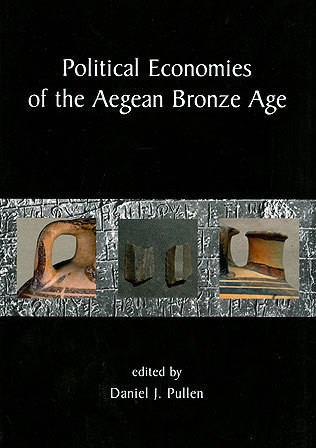
Format: Paperback
Pages: 256
ISBN: 9781842173923
Pub Date: 31 Mar 2010
Illustrations: 42 b/w illus, 15 tables
Description:
This volume brings together an international group of researchers to address how Mycenaean and Minoan states controlled the economy. The contributions, originally delivered at the 2007 Langford Conference at the Florida State University, examine the political economies of state (and pre-state) entities within the Aegean Bronze Age, including the issues of centralization and multiple scales of production, distribution, and consumption within a polity; importance of extraregional trade; craft specialization; the role of non-elite institutions, and the political economy before the emergence of the palaces. The contributors address these issues from an explicitly comparative perspective, both within and across Minoan and Mycenaean contexts.
The conclusions reached in this volume shed new light on the essential differences between and among "Minoan" and "Mycenaean" states through their political economies.



















